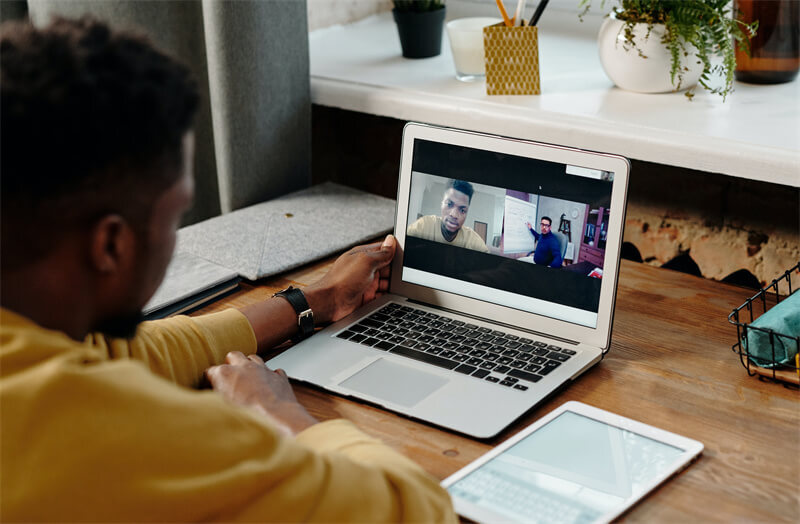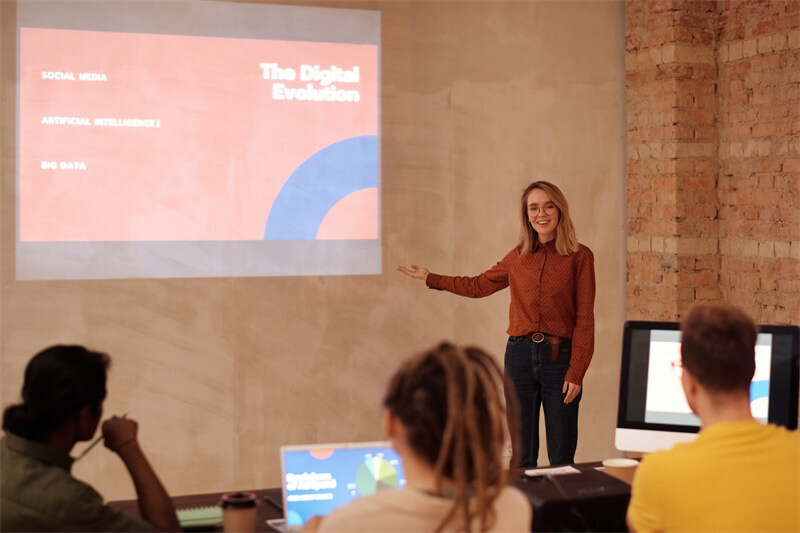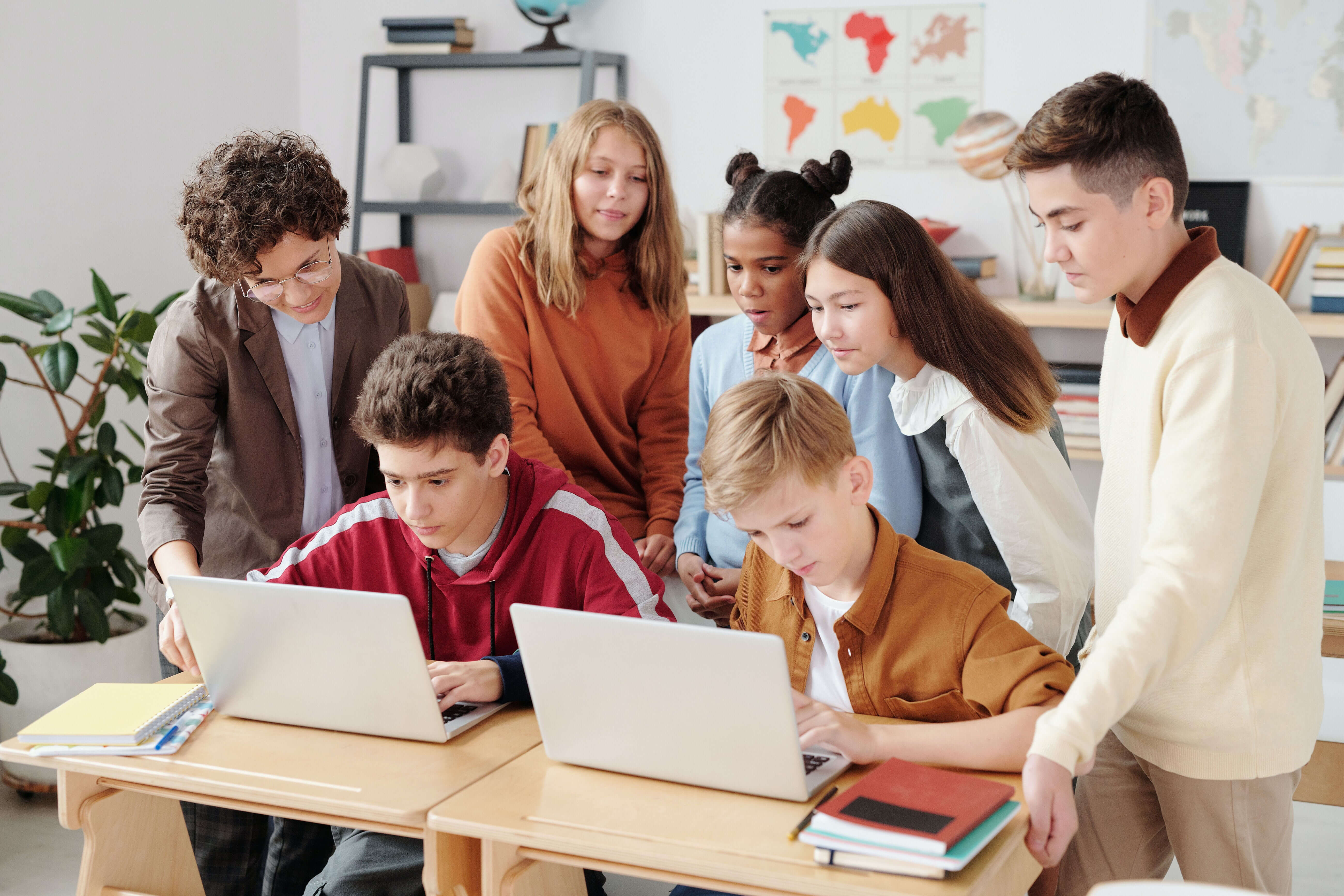Everything You Need to Know About Hybrid Classroom

Humans continue to adapt and embrace innovation in advanced technology, including education that creates more efficient, accessible, and flexible learning experiences. One such transformative approach is the hybrid classroom, a teaching method that blends traditional and modern learning under one roof.
This blog will explain a hybrid classroom setup and showcase its growing importance and effectiveness in today's educational landscape. So, read on as we will also address a few frequently asked questions for a detailed view of this innovative educational approach.
Part 1: What is Hybrid Classroom?
The hybrid classroom, also known as the blended classroom, is an innovative educational model that combines elements of traditional in-person learning with online or virtual learning experiences. In a hybrid learning classroom, students can attend classes physically in a traditional classroom setting or participate remotely through digital platforms. This approach offers flexibility, personalization, and a dynamic learning environment for different learning styles and individual needs.
For Example:
Let's consider a high school history class. The teacher conducts in-person courses three days a week, which some students attend physically. Meanwhile, other students dealing with health issues or distance constraints participate remotely through video conferencing tools. On the remaining two days, the teacher assigns online activities, such as watching educational videos, participating in virtual discussions, or completing interactive quizzes, which all students can access through a learning management system. This blend of face-to-face and online components in the history class creates an engaging and versatile learning experience for all students.
Part 2: The Pros and Cons of Hybrid Classroom
So, now I guess you have some idea about classroom hybrid learning. In this section, you will get a deeper knowledge as we share the positives and negatives of a hybrid classroom setup.
Pros of Hybrid Classroom:
1. Flexibility
The hybrid classroom offers students flexible learning as they can attend the classes physically or remotely. This accommodates different learning styles, personal circumstances, and geographical locations.
2. Personalized Learning
Since online resources are accessible, students can learn quickly and revisit recordings if needed. The customized approach helps students grasp concepts better and enhances overall learning outcomes.
3. Technological Integration
The hybrid learning setup integrates technology with education and thus prepares students for the digital age and future job market.
4. Accessibility
Remote learning makes education accessible to students who stay in far-off places or with disabilities and face challenges attending traditional classes.
5. Continuity of Learning
During unforeseen circumstances, like natural disasters or health crises, hybrid classroom solutions ensure that learning continues seamlessly through online platforms.
Cons of Hybrid Classroom:
1. Technology Challenges
The heavy reliance on technology can be a drawback for students with low access to reliable Internet connections or appropriate devices.
2. Teacher-Student Interaction
In-person interactions often foster stronger teacher-student relationships and better understanding which might be missing in a hybrid classroom.
3. Potential Distractions
Remote learning environments lead to distractions at home, and students can lose focus and engagement during the learning process.
4. Curriculum Adaptation
Teachers must design and implement a cohesive hybrid curriculum carefully so that in-person and online learners are on the same page.
5. Professional Development for Teachers
Many educators may not be pro with hybrid virtual classrooms. So, organizations need to provide adequate training and support for improved learning outcomes.
6. Equity Concerns
Honestly, even today, there are irregularities in the education system. Thus, ensuring equal access to resources and support for all students can be more challenging in the hybrid model.
In short, if you can address technology disparities, provide teacher training, and create an inclusive learning environment, it can mitigate the challenges of this educational approach.
Part 3: How to Set Up a Hybrid Classroom?
For a successful and long-term hybrid classroom setup, it is vital to use the right equipment at the right place. Since hybrid learning involves increased use of technology, the traditional classroom organization may not directly apply. Instead, adapt your classroom setup to support in-person and remote students effectively. The ideal arrangement will be as per the classroom size, shape, class size, and the tech tools you employ.
Here are the Steps and Recommended Equipment for Your Hybrid Learning Classroom:
1. Assess Classroom Needs
Evaluate your classroom's size, layout, and technical capabilities to determine what adjustments are necessary for hybrid learning.
2. Webcam for Remote Students
A high-quality webcam is essential for remote students to see and engage with in-person activities. OBSBOT Tiny 2 is a recommended option with advanced features, like whiteboard mode, 4K video quality, beauty mode, low light shooting, voice and gesture control, and more.
3. Audio Equipment
Besides the webcam's built-in microphones, consider using external or audio systems to improve sound quality, especially for larger classrooms.
4. Interactive Whiteboards and Smartboards
Implement interactive whiteboards or smartboards, allowing in-person and remote students to collaborate and interact with digital content.
5. Reliable Internet Connection
Ensure your classroom has a stable, high-speed internet connection to facilitate seamless online interactions.
6. Learning Management System (LMS)
Choose a suitable LMS to host course materials, assignments, and communication tools for in-person and remote students.
7. Virtual Conferencing Software
Employ reliable video conferencing tools like Zoom, Microsoft Teams, or Google Meet for remote students to attend live classes and engage in discussions.
8. Collaboration Tools
For group projects and document sharing, utilize online collaboration tools, such as Google Workspace or Microsoft Office 365.
9. Teacher Training
Provide comprehensive training for educators on using the technology effectively and managing in-person and remote students in the hybrid classroom.
So, the OBSBOT Tiny 2 webcam and other essential equipment can help create an engaging and inclusive hybrid learning classroom setup that fosters seamless interactions between in-person and remote students.
Part 4: How to Engage Students in a Hybrid Classroom?
After learning classroom setup, it is time to learn how to engage students in a hybrid classroom, so they enthusiastically participate.
Here are Six Tips to Promote Student Engagement:
1. Interactive Content
Include interactive and multimedia content in your lessons, such as videos, simulations, and virtual field trips. Use props and a colorful presentation to make the subject interesting.
2. Real-Life Applications
Share examples to relate class topics to real-life situations and current events to help students understand the relevance of the subject matter and foster curiosity and critical thinking.
3. Collaborative Projects
Encourage student cooperation by involving in-person and remote students in projects. Use various online tools and platforms that can help in promoting teamwork and communication.
4. Frequent Feedback
Regular feedback on student progress is a must, both one-to-one and as a group. Timely provide feedback to your students so they stay on track and motivated.
5. Interactive Discussions
Interactive discussions during both in-person and online sessions are a great way to foster relationships. Use polls, breakout rooms, and discussion forums to encourage participation and peer-to-peer learning.
6. Choice and Flexibility
In between sessions, offer students options for assignments or topics. Additionally, avoid strictness, be flexible with deadlines, and accommodate individual needs for a learning environment.
These strategies can help educators create a dynamic, engaging classroom for active learning and student success.
Part 5: FAQs about Hybrid Classroom
Q1: What is the difference between online and hybrid classes?
Online classes are entirely virtual, where students access course materials, lectures, and assignments remotely without any in-person components. On the other hand, hybrid classes blend in-person and online elements, offering students the option to attend some sessions physically while accessing other materials and activities online.
Q2: Does hybrid class mean in person?
Yes, in-person is a part of hybrid classes. Unlike fully online classes, hybrid courses combine in-person and online elements, so students can attend physical sessions while engaging with digital resources.
Q3: What are hybrid classroom features?
Hybrid classrooms have features like a mix of in-person and remote learning activities, interactive online content, real-time collaboration tools, virtual conferencing software, flexible classroom arrangements, and technology integration to enhance the learning experience for both in-person and remote students. Additionally, classrooms with hybrid learning may use tools like interactive whiteboards, smartboards, and advanced webcams like OBSBOT Tiny 2 to support seamless engagement and communication.
Conclusion
Thus, that was about hybrid classroom technology setup, its pros and cons, and answers to three detailed commonly asked questions. A hybrid classroom is a norm and will only spread in times to come. Many parents opt for homeschooling which highly uses hybrid teaching with Zoom and other platforms.
Lastly, we also shared the best webcam that you can use for the seamless online class, the OBSBOT Tiny 2.
















